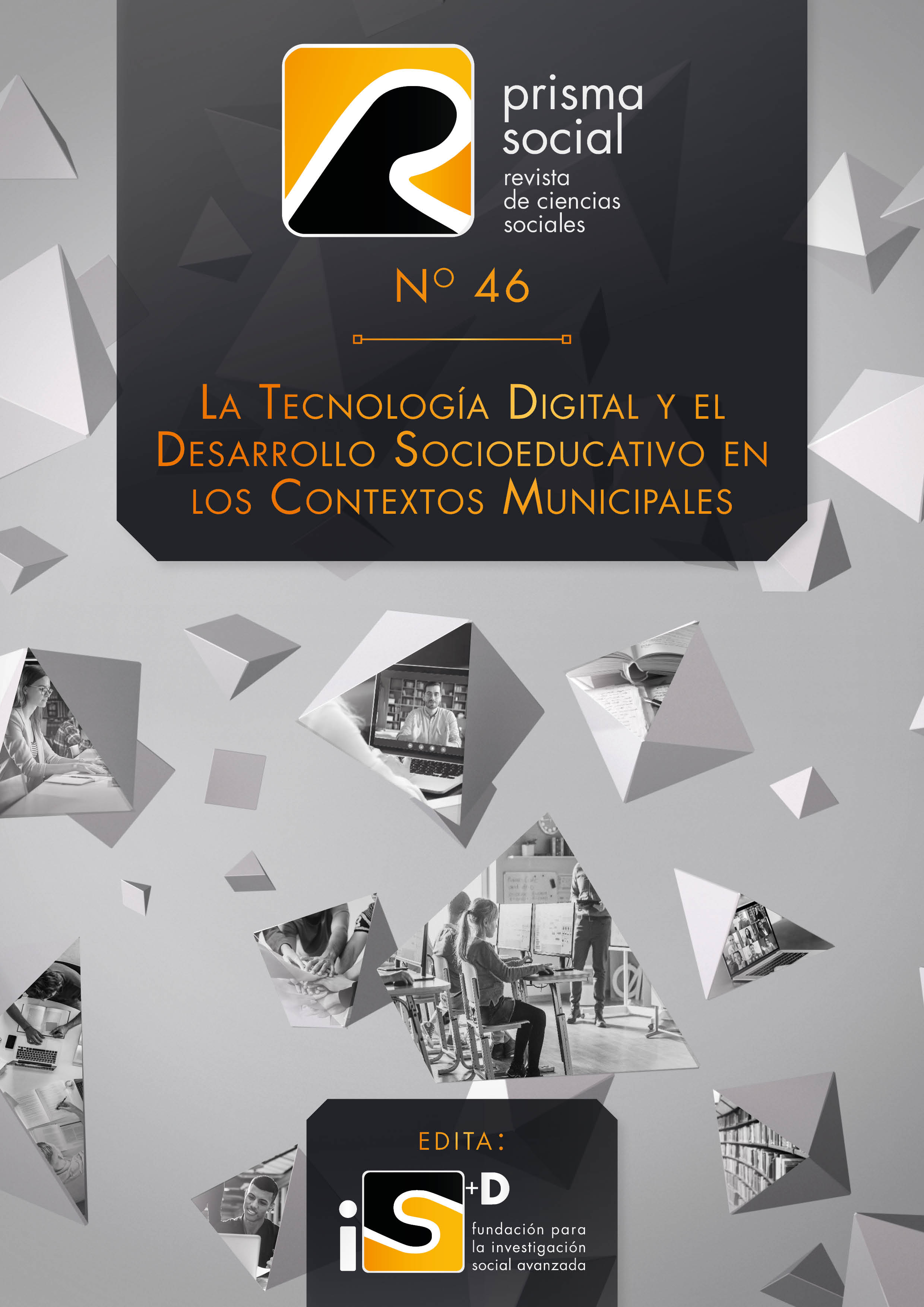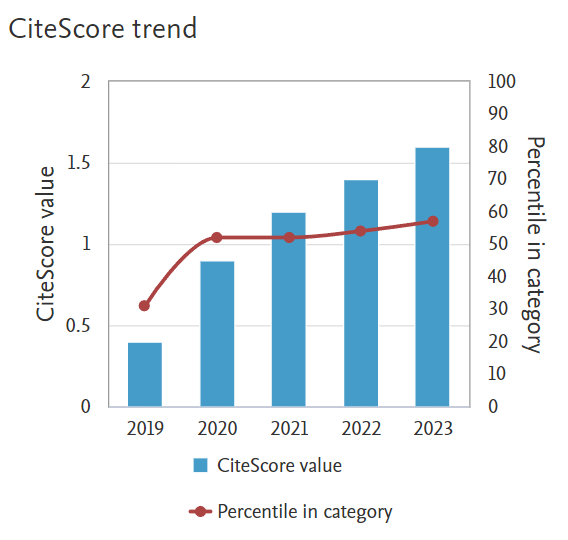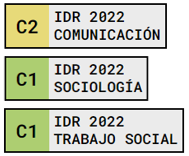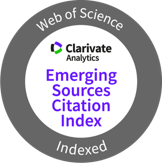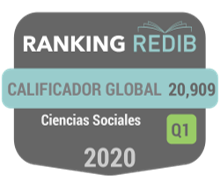Digital tools and academic levels in Bogota and surrounding municipalities
Keywords:
Statistical model, education level, sample survey, information technology, telecommunication equipment, municipal governmentAbstract
Digital tools play a crucial role in education as they improve access to information, motivate knowledge acquisition, personalize learning, promote collaboration, and provide appropriate feedback. Thus, the objective of this article was to segment and characterize the population of Bogota and its surrounding municipalities regarding academic levels and other demographic variables, taking the use of digital tools and connectivity into consideration. CRISP-DM was selected as the methodology for implementing decision trees for modeling anonymized micro-data from the 2021 Multipurpose Survey, for which the National Administrative Department of Statistics was the field operator. The sample was composed of 278,023 people, representing a universe of 9,248,000 people in total. The descriptive analysis showed the association of demographic variables, the use of information technology and communication, employment, and revenue over academic levels. Subsequently, with the identified variables, the decision tree evidenced, with a correct classification percentage of 82,8%, that those people who have a high academic level tend to be older than 28 years old, spend a significant amount of money on technology devices, and software, have at least one place to access the internet and use it for educational purposes.
Downloads
References
Andrade, M., Valdivieso, D., & Zambrano, C. (2023). Redes sociales y el comportamiento de los adolescentes en la comunicación digital. Polo del Conocimiento, 8(10), 357-371 http://doi.org/10.23857/pc.v8i10.6129
Barragán, S., & González, L. (2021). Factores que inciden en la deserción estudiantil de las personas de los sectores LGBTI en Bogotá. Sophia-Educación, 7(1), 1–16. http://dx.doi.org/10.18634/sophiaj. 17v.1i.994
Barragán, S., & González, L. (2023). El nivel educativo en su papel mediador en la discriminación observada por orientación sexual. Revista Colombiana de Sociología, 6(1), 221–242. https://doi.org/10.15446/rcs.v46n1/84549
Cicik Wijayanti, T., Naim, S., Hendayani, N., & Hanum, F. (2024). Identify the use of economics for family financial management in digital days. Indonesian Interdisciplinary Journal of Sharia Economics (IIJSE), 7(1). https://doi.org/10.31538/iijse.v7i1.3754
De Zúñiga, H. G., Mateos, A., & Inguanzo, I. (2022). Rethinking social capital in the digital era and diverse societies. Revista Internacional de Sociología, 80(4). https://doi.org/10.3989/ris.2022.80.4.MI22-0001
Departamento Administrativo Nacional de Estadística-DANE. (2018). Marco Geoestadístico Nacional 2018. https://bit.ly/3Uzy4EA
Departamento Administrativo Nacional de Estadística-DANE. (2022). Encuesta multipropósito Bogotá Cundinamarca EM 2021. https://bit.ly/3wgoZbH
Dirección de Metodología y Producción Estadística - DIMPE. (2022). Ficha metodológica encuesta multipropósito Bogotá Cundinamarca 2021. https://bit.ly/44ujyT7
Esteve?Mon, F. M., Postigo?Fuentes, A. Y., & Castañeda, L. (2023). A strategic approach of the crucial elements for the implementation of digital tools and processes in higher education. Higher Education Quarterly, 77(3), 558–573. https://doi.org/10.1111/hequ.12411
Galpin, I., Morales Dussan, S. D., Leon, M., & Garcia-Bedoya, O. (2022). Exploring the Colombian digital divide using Moodle logs through supervised learning. Interactive Technology and Smart Education, 19(3), 281–299. https://doi.org/10.1108/ITSE-03-2021-0052
García-Martínez, J.-A., Rosa-Napal, F.-C., Romero-Tabeayo, I., López-Calvo, S., & Fuentes-Abeledo, E.-J. (2020). Digital Tools and Personal Learning Environments: An Analysis in Higher Education. Sustainability, 12(19), 8180. https://doi.org/10.3390/su12198180
Gatto, S. L., & Tak, S. H. (2008). Computer, Internet, and E-mail Use Among Older Adults: Benefits and Barriers. Educational Gerontology, 34(9), 800–811. https://doi.org/10.1080/03601270802243697
Ghorbanian, A., Aiello, B., & Staples, J. (2022). Under-Representation of Transgender Identities in Research: The Limitations of Traditional Quantitative Survey Data. Transgender Health, 7(3), 261–269. https://doi.org/10.1089/trgh.2020.0107
Greener, S., & Wakefield, C. (2015). Developing confidence in the use of digital tools in teaching. The Electronic Journal of e-Learning, 13(4),260-267 https://bit.ly/3UoW78U
Guevara, E., Lucero, E., Noroña, F., & Quishpe, M. (2024). Herramientas Web 2.0: una revisión bibliográfica sobre su aplicación en la metodología de la clase inversa. MENTOR Revista de investigación educativa y deportiva, 3(7), 187–201. https://doi.org/10.56200/mried.v3i7.6734
Hernández Herrera, M. T., & Esparza Urzúa, G. A. (2022). La calidad de la educación en territorios rurales desde las políticas públicas. Sophia, 32, 171–193. https://doi.org/10.17163/soph.n32.2022.05
Hernández, J., & Rayón, L. (2021). Teléfonos móviles, redes sociales y praxis en adolescentes. Educatio Siglo XXI, 39(3), 135–156. https://doi.org/10.6018/educatio.427011
Hrynevych, L., Morze, N., Vember, V., & Boiko, M. (2021). Use of digital tools as a component of STEM education ecosystem. Educational Technology Quarterly, 2021(1), 118–139. https://doi.org/10.55056/etq.24
Kemp, S. (2023). We Are Social, DataReportal, & Meltwater. Biggest social media platforms 2023. Most Popular Social Networks Worldwide as of October 2023, Ranked by Number of Monthly Active Users. https://bit.ly/3wpXvQM
Kingsford, C., & Salzberg, S. L. (2008). What are decision trees? Nature Biotechnology, 26(9), 1011–1013. https://doi.org/10.1038/nbt0908-1011
Levano, L., Sanchez, S., Guillén, P., Tello, S., Herrera, N., & Collantes, Z. (2019). Competencias digitales y educación. Propósitos y Representaciones, 7(2). https://doi.org/10.20511/pyr2019.v7n2.329
Mellon, J., & Prosser, C. (2017). Twitter and Facebook are not representative of the general population: Political attitudes and demographics of British social media users. Research & Politics, 4(3), 205316801772000. https://doi.org/10.1177/2053168017720008
Mero-Ponce, J. I. (2021). Herramientas digitales educativas y el aprendizaje significativo en los estudiantes. Dominio de las ciencias, 7(1), 712–724. https://doi.org/10.23857/dc.v7i1.1735
Miguel, D. (2020). Academic achievement and technology: Evolution of the debate in the last decades. Cadernos de Pesquisa, 50(178), 1122–1137. https://doi.org/10.1590/198053147144
Mohammed, Q. A., Rao Naidu, V., Hasan, R., Mustafa, M., & Jesrani, K. A. (2019). Digital education using free and open-source tools to enhance collaborative learning. IJAEDU-International E-Journal of Advances in Education, 5(13), 50-57. https://doi.org/10.18768/ijaedu.531636
Mucundanyi, G., & Woodley, X. (2021). Exploring Free Digital Tools in Education. International Journal of Education and Development using Information and Communication Technology (IJEDICT), 17(2), 96-103. https://bit.ly/3ycShZh
Nkansah, J. O., & Oldac, Y. I. (2024). Unraveling the attributions of digital literacy skills and knowledge gap in Ghana’s higher education: Undergraduate students voices in a phenomenological study. Education and Information Technologies. https://doi.org/10.1007/s10639-024-12483-8
Perrin, A. (2015). Social Media Usage: 2005-2015. Pew Research Center. https://bit.ly/4bt43wV
Pillajo, G., Torres, L., Vera, J., & Grunauer, G. (2023). Una revisión sistemática de las estrategias de aprendizaje enfocadas en las personas adultas con escolaridad inconclusa del tercero BGU. Polo del conocimiento, 9(1), 24-48. https://doi.org/10.23857/pc.v9i1.6366.
Robbin, A. (1999). The problematic status of U.S. statistics on race and ethnicity. Journal of Government Information, 26(5), 467–483. https://doi.org/10.1016/S1352-0237(99)00078-7
Shwedeh, F. (2024). Harnessing digital issue in adopting metaverse technology in higher education institutions: Evidence from the United Arab Emirates. International Journal of Data and Network Science, 8(1), 489–504. https://doi.org/10.5267/j.ijdns.2023.9.007
Simões, F., & Marta, E. (2024). Public Employment Services and Vulnerable Youth in the EU: The Case of Rural NEETs. Politics and Governance, 12. https://doi.org/10.17645/pag.7432
Ventrella, F. M., & Cotnam-Kappel, M. (2024). Examining digital capital and digital inequalities in Canadian elementary schools: Insights from teachers. Telematics and Informatics, 86, 102070. https://doi.org/10.1016/j.tele.2023.102070
Wirth, R., & Hipp, J. (2000). CRISP-DM: Towards a Standard Process Model for Data Mining. 1-11. https://bit.ly/4acfOGU
Zickuhr, K., & Madden, M. (2012). Older adults and internet use. Pew Research Center. https://bit.ly/3yafs6q?
Downloads
Published
How to Cite
Issue
Section
License
Copyright (c) 2024 Revista Prisma Social

This work is licensed under a Creative Commons Attribution-NonCommercial-NoDerivatives 4.0 International License.
Those authors who publish in this journal accept the following terms:
-
Authors retain copyright.
-
Authors transfer to the journal the right of first publication. The journal also owns the publishing rights.
-
All published contents are governed by an Attribution-NoDerivatives 4.0 International License.
Access the informative version and legal text of the license. By virtue of this, third parties are allowed to use what is published as long as they mention the authorship of the work and the first publication in this journal. If you transform the material, you may not distribute the modified work. -
Authors may make other independent and additional contractual arrangements for non-exclusive distribution of the version of the article published in this journal (e.g., inclusion in an institutional repository or publication in a book) as long as they clearly indicate that the work was first published in this journal.
- Authors are allowed and recommended to publish their work on the Internet (for example on institutional and personal websites), following the publication of, and referencing the journal, as this could lead to constructive exchanges and a more extensive and quick circulation of published works (see The Effect of Open Access).

